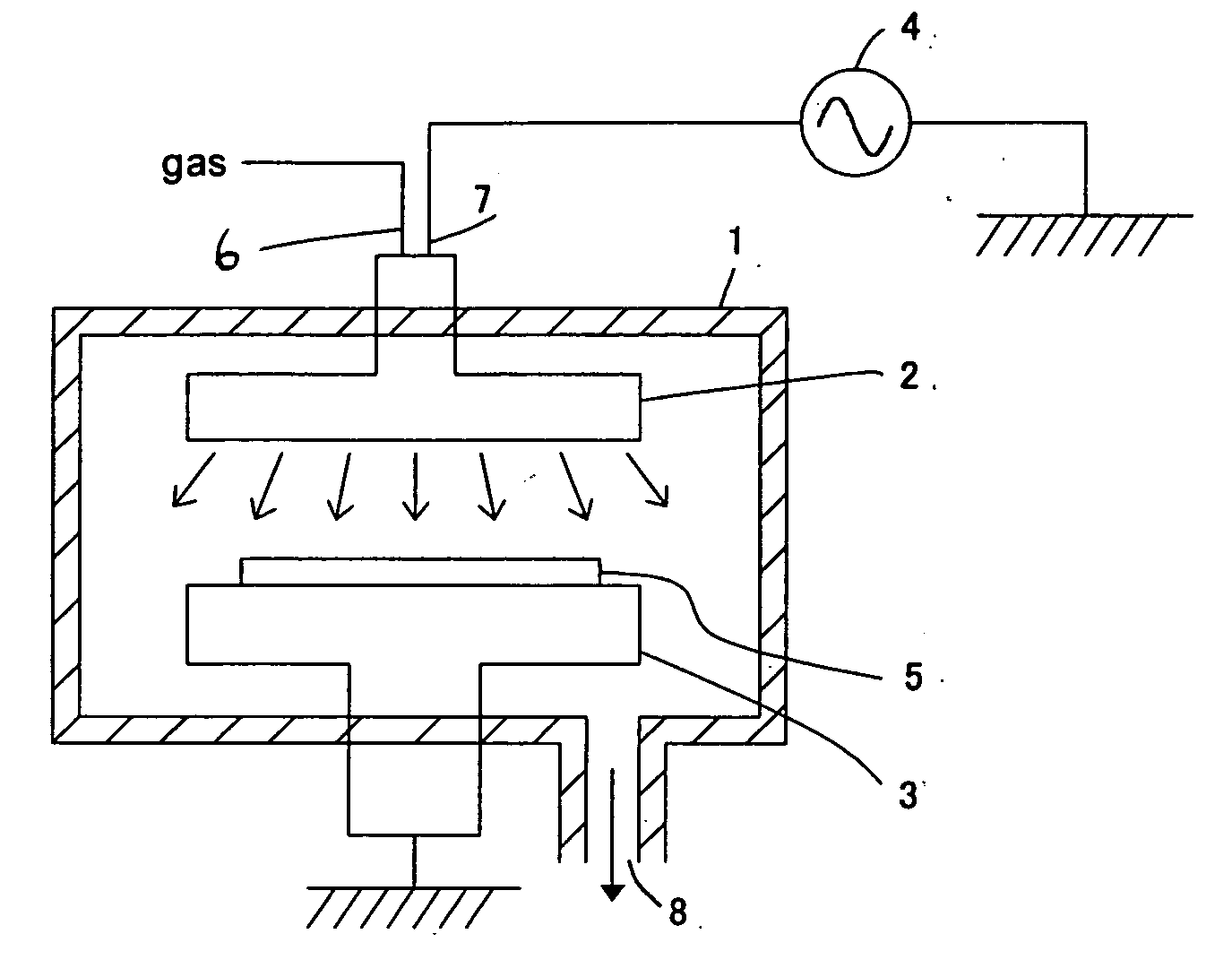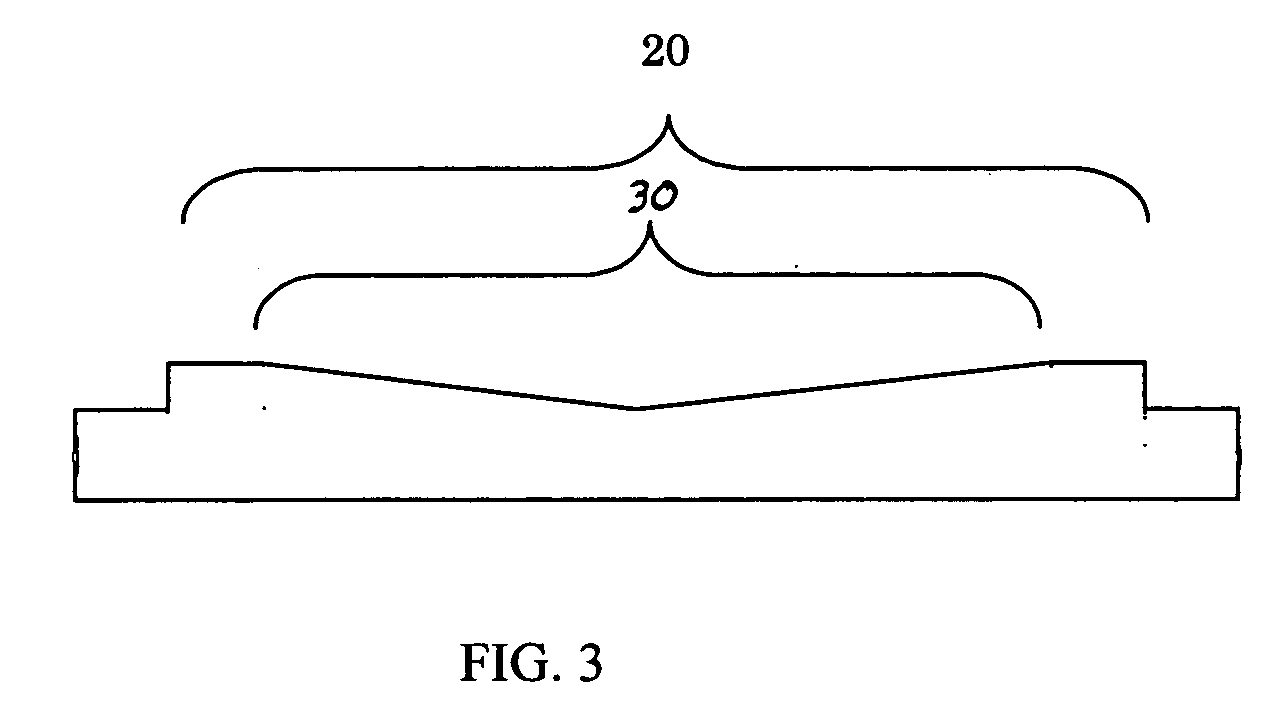Method of stabilizing film quality of low-dielectric constant film
a low-dielectric constant and film quality technology, applied in the field of manufacturing semiconductor devices, can solve the problems of reducing the mechanical strength of the film, unable to achieve satisfactory improvement of plasma fluctuation and unstable state, and difficulty in forming a low-dielectric constant film having stable film quality without plasma damag
- Summary
- Abstract
- Description
- Claims
- Application Information
AI Technical Summary
Benefits of technology
Problems solved by technology
Method used
Image
Examples
example 1
A State Before the Improvement
[0071] Workpiece: Low-k silicon insulation film [0072] Upper electrode: Flat [0073] Lower electrode: Flat (The entire surface is in contact.) [0074] DM-DMOS: 200 sccm [0075] He: 140 sccm [0076] Isopropyl alcohol: 400 sccm [0077] O2: 200 sccm [0078] Pressure: 800 Pa [0079] Heat treatment temperature: 380° C. [0080] Deposition growth rate: 800 nm / min [0081] Dielectric constant: 2.6 [0082] Hardness: 1.0 GPa [0083] Modulus: 6 GPa [0084] Antenna TEG yield: 60%
example 2
[0085] Workpiece: Low-k silicon insulation film [0086] Upper electrode: 1 mm convex type [0087] Lower electrode: 0.5mm concave type [0088] DM-DMOS: 200 sccm [0089] He: 140 sccm [0090] Isopropyl alcohol: 400 sccm [0091] O2: 200 sccm [0092] Pressure: 800 Pa [0093] Heat treatment temperature: 380° C. [0094] Deposition growth rate: 790 nm / min [0095] Dielectric constant: 2.6 [0096] Hardness: 1.0 GPa [0097] Modulus: 6 GPa [0098] Antenna TEG yield: 80%
example 3
[0099] Workpiece: Low-k silicon insulation film [0100] Upper electrode: 3.0 mm convex type [0101] Lower electrode: 0.5 mm concave type [0102] DM-DMOS: 200 sccm [0103] He: 140 sccm [0104] Isopropyl alcohol: 400 sccm [0105] O2: 100 sccm [0106] Pressure: 600 Pa [0107] Heat treatment temperature: 380° C. [0108] Dielectric constant: 2.62 [0109] Deposition growth rate: 750 nm / min [0110] Hardness: 1.1 GPa [0111] Modulus: 7 GPa [0112] Antenna TEG yield: 100%
PUM
| Property | Measurement | Unit |
|---|---|---|
| temperature | aaaaa | aaaaa |
| dielectric constants | aaaaa | aaaaa |
| leakage current distribution | aaaaa | aaaaa |
Abstract
Description
Claims
Application Information
 Login to View More
Login to View More - R&D
- Intellectual Property
- Life Sciences
- Materials
- Tech Scout
- Unparalleled Data Quality
- Higher Quality Content
- 60% Fewer Hallucinations
Browse by: Latest US Patents, China's latest patents, Technical Efficacy Thesaurus, Application Domain, Technology Topic, Popular Technical Reports.
© 2025 PatSnap. All rights reserved.Legal|Privacy policy|Modern Slavery Act Transparency Statement|Sitemap|About US| Contact US: help@patsnap.com



